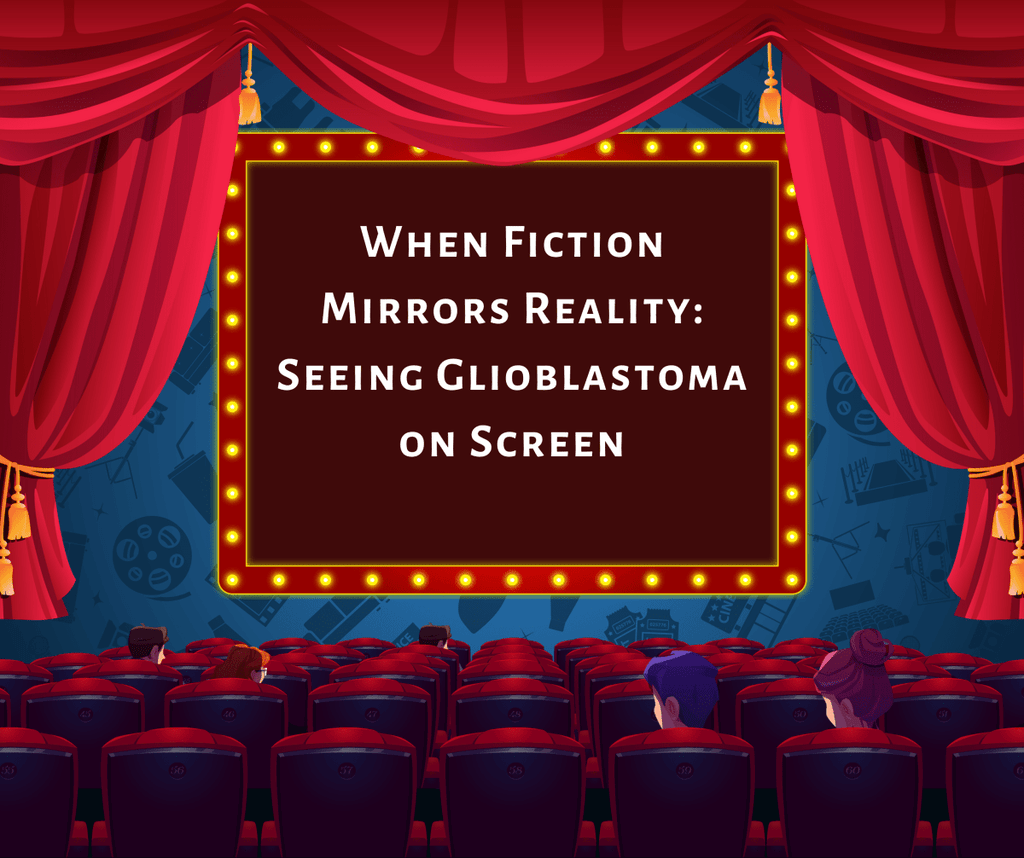When Fiction Mirrors Reality: Seeing Glioblastoma on Screen

Before November of 2023, I had never even heard the word glioblastoma. It was not in my vocabulary, not on my radar, and certainly not something I ever expected to collide with my life. And then, suddenly, it became my reality. A diagnosis that shook my world and forced me into a fight I never imagined.
Since then, something strange has happened. It feels like everywhere I turn—TV shows, streaming platforms, conversations—glioblastoma keeps popping up. Characters on screen are suddenly carrying the same diagnosis I do. Of course, their stories are fictional, but I cannot help but feel connected. It is both surreal and strangely comforting to see glioblastoma recognized, portrayed, and talked about in ways I never noticed before.
Here are a few of the storylines that have stood out to me:
Amazon’s Countdown – Detective Mark Meachum
In Countdown, Detective Mark Meachum (played by Jensen Ackles) begins the series with a crushing revelation: an inoperable glioblastoma. His condition becomes part of the ticking clock theme that drives the show. What strikes me most is how he hides it from his team. That secrecy, that quiet burden of carrying something so life-altering alone, is something I deeply recognize. Seeing it dramatized on screen made me realize just how isolating glioblastoma can feel—and how important it is that these stories spark conversation.
Dexter: Resurrection – Charley’s Mother
In Dexter: Resurrection, glioblastoma shows up in a heartbreaking subplot. Charley, played by Uma Thurman, is a hardened assassin, but her motivations are softened when we learn her mother is dying of glioblastoma. Suddenly, her choices—her alliances, her compromises—are framed by desperation to take care of her mother. This resonated deeply. It reminded me that glioblastoma does not just impact the patient; it ripples out to families, caregivers, and loved ones. Sometimes the weight of the disease pushes people into corners they never expected.
ER – Dr. Mark Greene
For longtime TV fans, one of the earliest and most unforgettable glioblastoma storylines came from ER. Dr. Mark Greene, a beloved main character, is diagnosed with glioblastoma and spends his final season navigating treatment, decline, and ultimately death. I was too young to fully understand it when it aired, but revisiting those episodes now hits differently. They capture the rollercoaster—the fight, the fleeting moments of hope, and the brutal reality that glioblastoma does not play fair.
EastEnders – Lola Pearce
British soap opera EastEnders took a bold step by giving Lola Pearce a glioblastoma diagnosis. Her storyline is gut-wrenching yet important, showing how the disease can derail a young life full of plans, love, and possibility. The show leaned into the emotional devastation—not just for Lola, but for her partner, her child, and her community. It is hard to watch, but it is real. And sometimes we need real.
Shortland Street – Luke Durville
Across the globe in New Zealand, Shortland Street gave us Luke Durville’s glioblastoma storyline. He is diagnosed just before his wedding—a time that should have been full of joy and promise. Instead, he and his fiancée are forced to navigate the harsh reality of limited time. For me, this storyline hit close to home: how a diagnosis interrupts not just your health, but every dream you had sketched for your future.
The Midnight Club – Amesh
On Netflix’s The Midnight Club, a group of young people in hospice gather to tell stories while each quietly battles their own terminal illness. One of them, Amesh, has glioblastoma. This show’s strength lies in its honesty: these kids laugh, fight, connect, and make the most of their days—even as the clock ticks. Amesh’s character is both heartbreaking and inspiring. Watching it, I felt a sense of kinship with him.
Why These Stories Matter
I will admit—it is strange to be grateful for fictional portrayals of a disease I would never wish on anyone. But I am. Every time glioblastoma shows up on screen, it builds awareness. It gives a face to a disease that is still largely unknown to most people. Before November 2023, I did not know it existed. Now I live with it every day. And when TV writers choose to include it, they are creating threads of connection for patients like me.
These storylines remind viewers that glioblastoma is real, that it steals too many lives too soon, and that behind every diagnosis is not just a patient but a family, a circle of friends, and an entire community touched by its weight.
Closing Thoughts
Fiction can never capture every layer of what it means to live with glioblastoma. But these shows try. And in trying, they give voice, representation, and visibility to something that often hides in the shadows.
For me, that means a lot. It means I am not alone. It means my fight is seen. And it means, maybe, someone else watching for the first time will hear the word glioblastoma and remember it—so they will not have to say, like I once did, “I had never heard of it before.”


 NEW ARRIVALS
NEW ARRIVALS APPAREL
APPAREL GIFT AND HOME
GIFT AND HOME COLLECTION'S
COLLECTION'S HOPE HUB
HOPE HUB BLOG
BLOG




🤗🤗🙏
🩶🩶